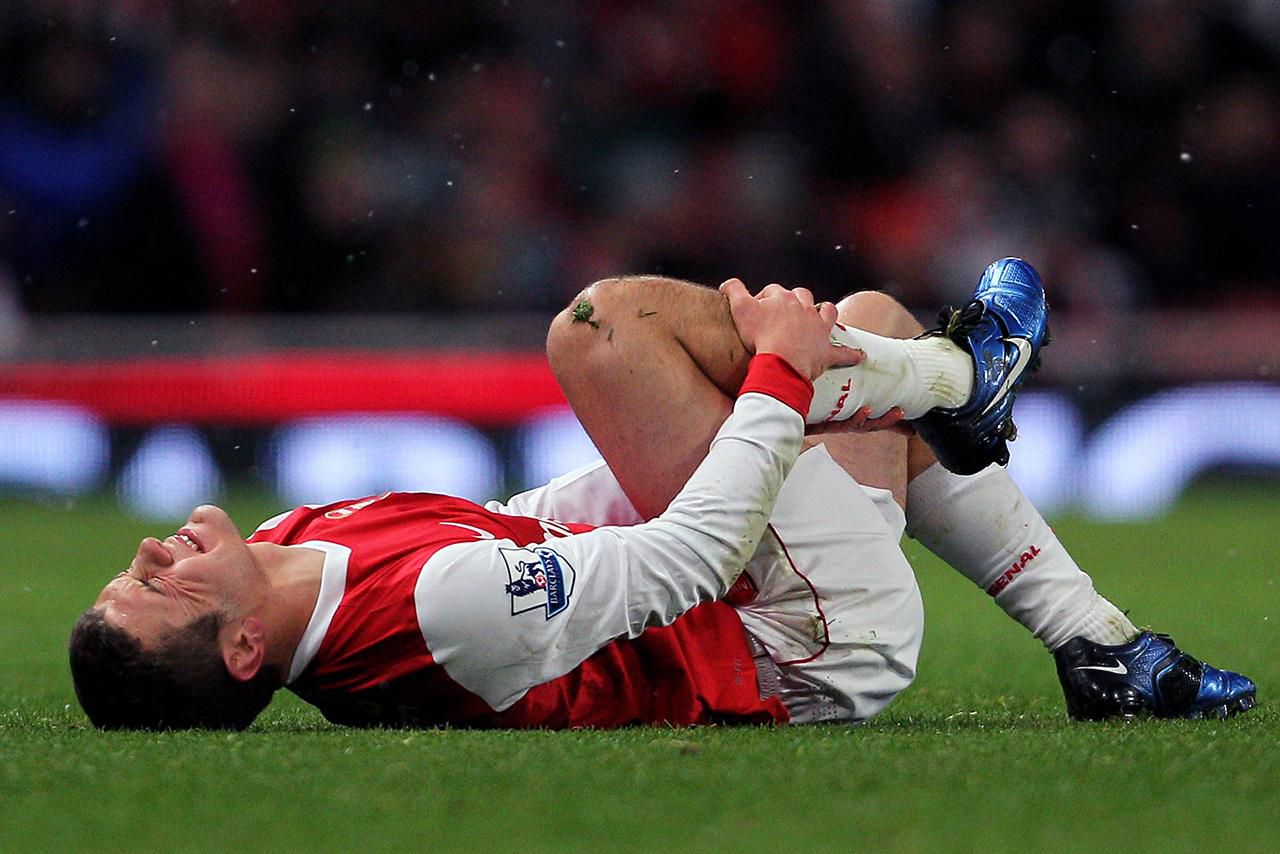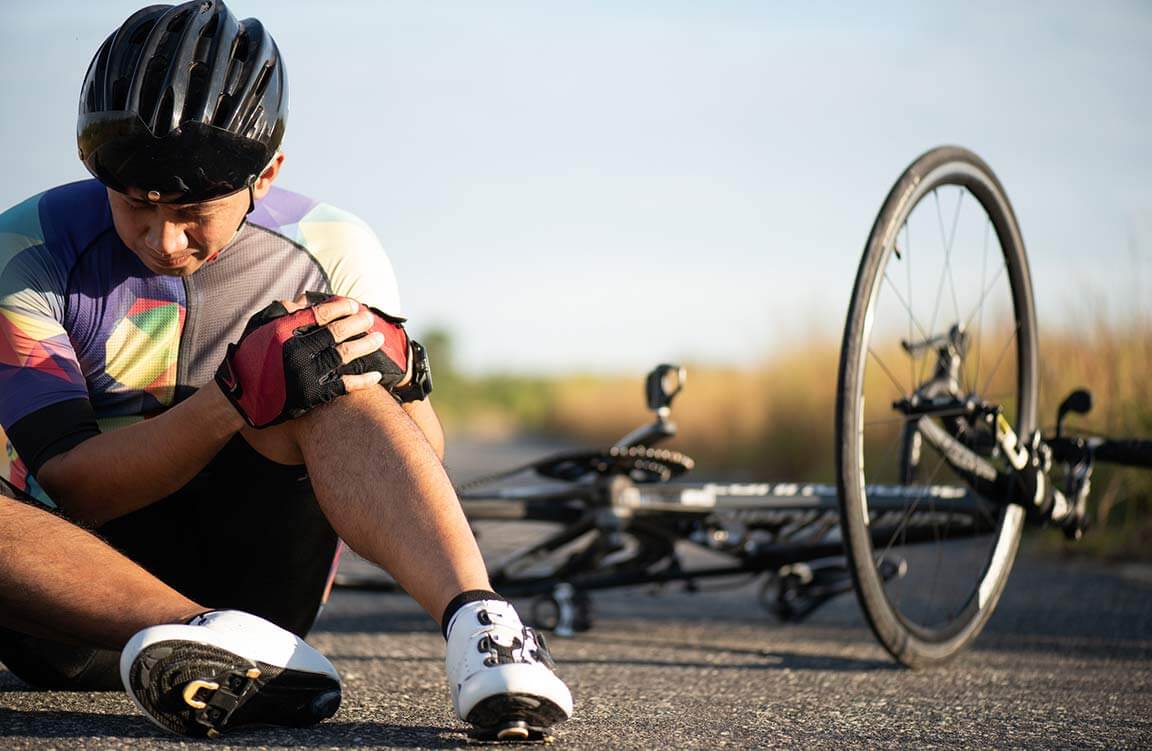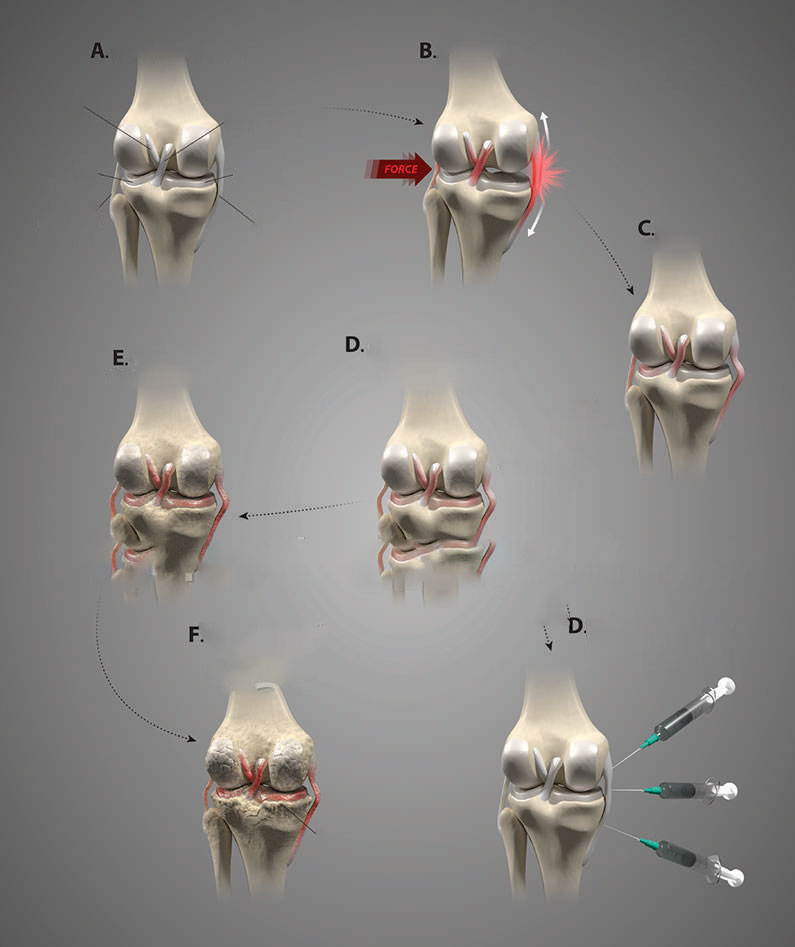patient Information
Knee Pain
The knee is a complex joint with many components, making it vulnerable to a variety of injuries. Some of the most common knee injuries include ligament sprains, fractures, and dislocations.

Injuries on the field
Unfortunately playing a sport on uneven ground such as a football field or even sand puts an excessive strain on the ligaments of the knee resulting in instability and injury.

Sudden Dislocation
Long-term knee instability may only show itself when the joint is subjected to a stress, such as running, which it doesn’t experience during normal movements in everyday life.

Accidents
Even the most careful sports participants can unexpectedly be involved in an accident which may cause injury to the body resulting in long term pain and disability.
Knee pain can be caused by local injury or a referred pain from ankle, hip, SIJ or low-back dysfunction. The skill of the doctor and the recovery of the patient is dependent on whether treatment resolves the underlying cause of the pain.
A thorough medical history and examination of the knee will often indicate whether pain is local or referred. X-rays and MRI offer little explanation as to the cause of the pain. It will obviously show damage to structures of the knee if there is a knee injury but it will not show the cause of the pain if it is referred from other structures.
How soft tissue injury leads to Degenerative Arthritis

Your tooltip content goes here
Your tooltip content goes here
Your tooltip content goes here
Your tooltip content goes here
Your tooltip content goes here
Your tooltip content goes here
Your tooltip content goes here
Your tooltip content goes here
Your tooltip content goes here
Your tooltip content goes here
Your tooltip content goes here
Your tooltip content goes here
Your tooltip content goes here
Your tooltip content goes here
Your tooltip content goes here
Your tooltip content goes here
Knee pain can start from a traumatic event, such as a fall or football tackle. Or it can become more apparent over time, with increasingly stiff and swollen knees.
Knee joint instability is the most common reason for knee pain, yet often goes undiagnosed in patients and lead to unnecessary knee surgery. It is due to weakness or tears of the ligaments and tendon attachments surrounding the knee joint.
Knee instability can also result in the kneecap tracking abnormally, causing pain and the cartilage under the kneecap to wear down.
Following a trauma, ligaments become sprained and relaxed. If left untreated, chronic joint instability and destructive joint motion occur with continued use of the joint, ultimately leading to extensive degenerative changes and osteoarthritis.
Destructive joint motion and the degenerative process can be prevented with appropriate intervention through Prolotherapy, including traditional dextrose Prolotherapy, Platelet Rich Plasma, and Stem Cell Therapy.
These regenerative treatments can be used for arthritic joints as well, but utilizing these options earlier can potentially save a lot of lost time and lifestyle adjustments due to pain.
